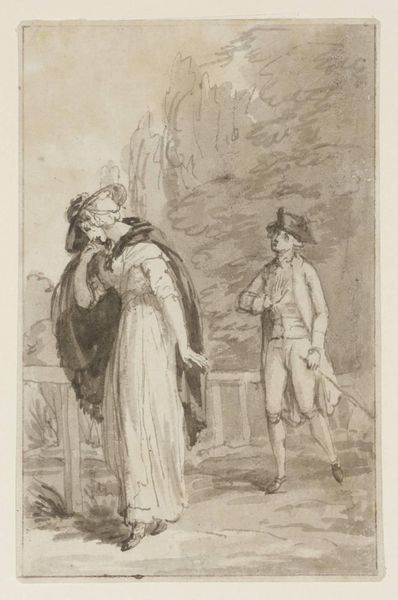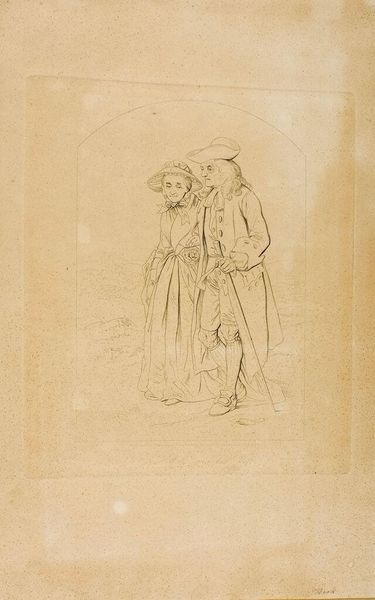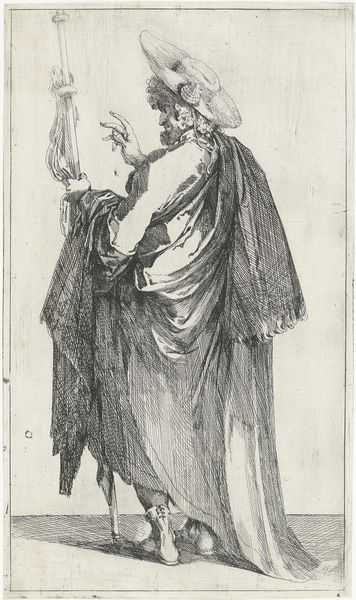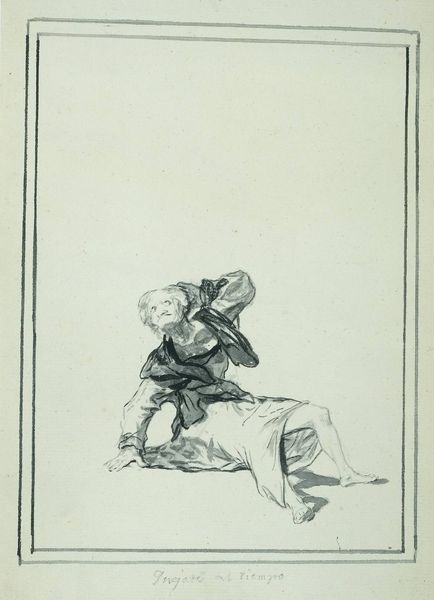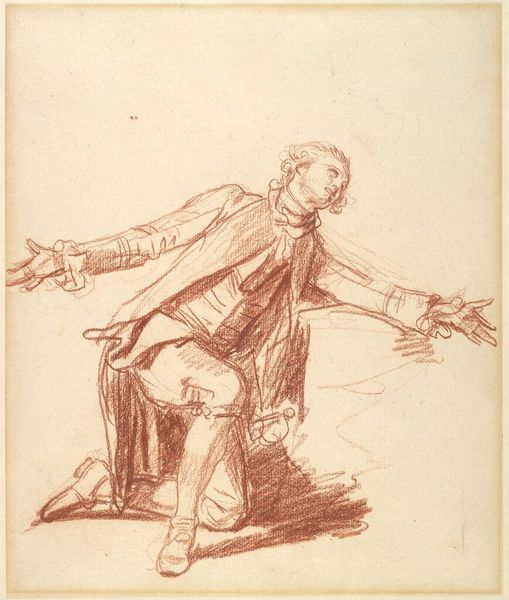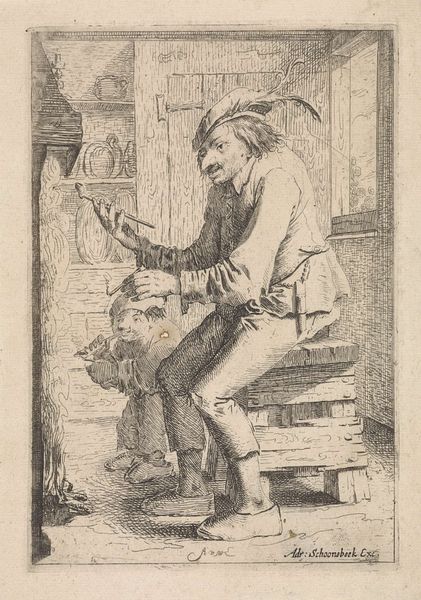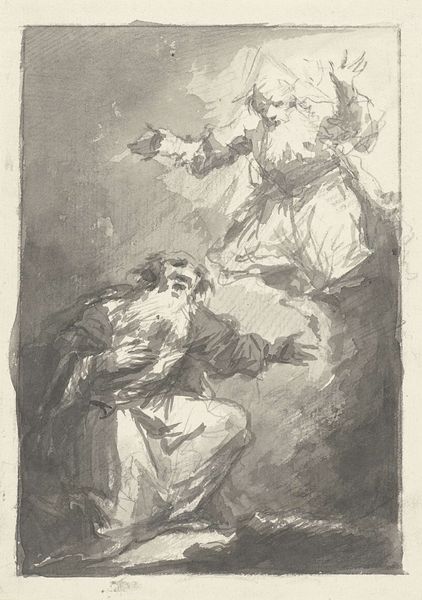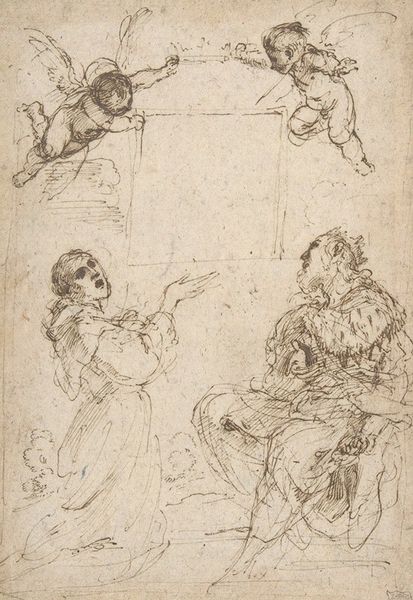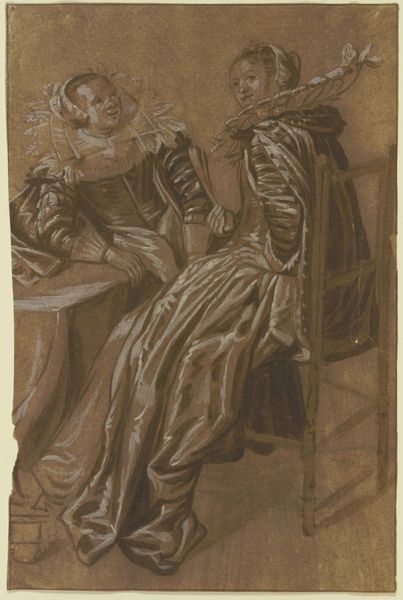
drawing, ink
#
drawing
#
figuration
#
ink
#
romanticism
#
history-painting
Copyright: Public Domain: Artvee
Francisco de Goya made this ink wash drawing, called "Pygmalion and Galatea," in Spain, likely in the late 18th or early 19th century. This image revives an ancient Greek myth, but Goya gives the story a peculiar twist. In the original, Pygmalion is a sculptor who falls in love with his statue of an ideal woman, and the goddess Venus brings the sculpture to life. Yet, here, Goya depicts Pygmalion wielding a hammer as if Galatea is something to be built rather than admired. Goya lived in a time of great social and political upheaval in Spain. The Enlightenment ideas challenged the traditional power structures of the aristocracy and the church. His work often critiqued the social norms and injustices of his time. Perhaps Goya is using this scene to comment on the role of women in society, portraying Galatea as a construction of male desire, rather than a fully realized human being. To understand Goya's art more fully, we can consult letters, historical documents, and contemporary writings to provide insights into the culture that shaped his vision.
Comments
No comments
Be the first to comment and join the conversation on the ultimate creative platform.


